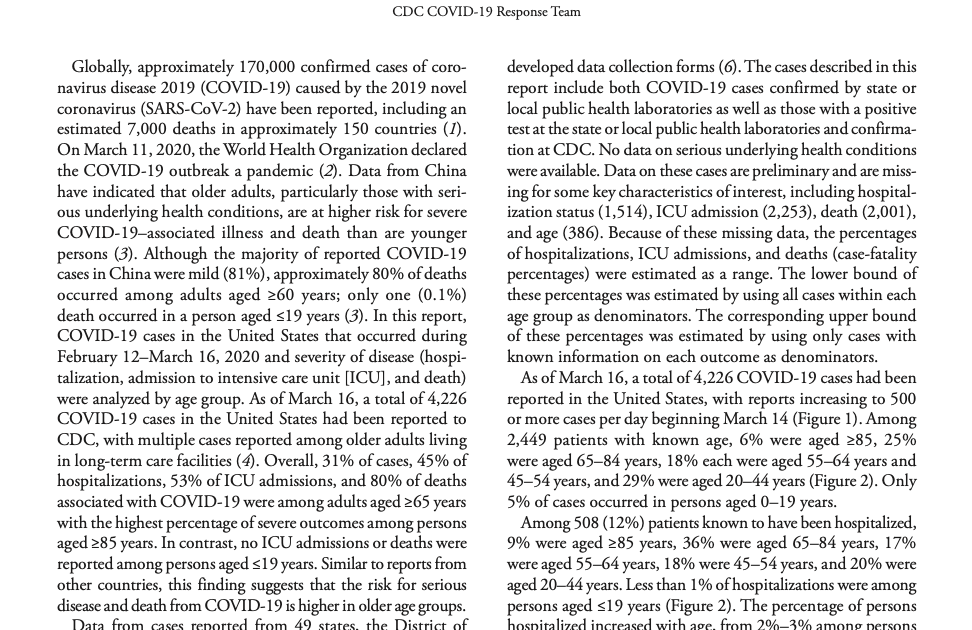This week’s MMWR Report early release; Volume 69; March 18, 2020
Severe outcomes among patients with Coronavirus Disease 2019 (COVID-19) – United States, Feb 12-March 16, 2020
- 4,226 COVID-19 cases were reported in this time period in the US, excluding repatriated and cruise ship cases.
- 31% of cases, 45% of hospitalizations , 53% of ICU admissions and 80% of deaths associated were among adults aged > 65 yrs.; those >85 yrs at particular risk.
- This data generally mirrors that reported from Wuhan, China
Dr. Sheila Fallon-Friedlander’s Commentary
It is hard to believe that less than 2 months ago we were pondering “Where have all the Viruses gone?” at Maui Derm. We were also breathing a small sigh of relief that Zika, SARs and other pandemics we have previously seen did not prove prolonged nor significant risks.
At the January meeting we did discuss that Corona virus was looming, and that there was much we did not yet understand. Was transmission mainly droplet or aerosolized? Was it bats? Or bats and snakes?
We now know more, but not enough. Respiratory droplet spread definitely occurs, but unfortunately aerosolization (a riskier form of spread that may leave virus suspended in air for hours) likely plays a role. Thus staying away from each other is critical!
However, effective social distancing may require a level of discipline hard to come by for the American public. When my toddler granddaughter runs toward me, I want to hug her. Unfortunately her altruistic, health worker parents are on the front line of care and at risk for infection. Little Emmy may not get sick, but could easily transmit infection to her at-risk grandma. It takes all of my effort to refrain from grabbing her. I need to remember that we must “flatten the curve of infection” so that our health care system is more gradually—rather than acutely—taxed.
Amidst all these fears, there is some good news. The FDA’s approval of chloroquine and hydroxychloroquine for research and compassionate use identifies off-label options involving these two relatively innocuous drugs. Preliminary trials utilizing these antimalarials with azithromycin suggest that this combination therapy may provide even more hope. As Dr. Rosen points out, this does not diminish the importance of evaluation.
Dr. Yan’s comments regarding childhood disease are reassuring. Excluding neonates, this age group tends to do well. This may well be related to the immaturity of their pulmonary ACE inhibitors. However, we do not yet know if they are carriers.
MMWR’s recent report also confirms that those less than 19 years of age are at low risk for disease, and that those >65 are at high risk. I think their findings substantiate a risk that has been downplayed previously: Yes, 80% of deaths have occurred in those >65, but that means that the 20% of deaths occur in those 20-64 years of age. We need to share that info with those found partying and ignoring social distancing protocols. Members of this age group must be aware they can get sick, and they can spread disease to others, even if they aren’t feeling so bad.
Global scientific ingenuity will lead us out of this. Until then, keep your distances and consider asking about anti-malarials and azithromycin should you or your patients contract this vexing virus!


